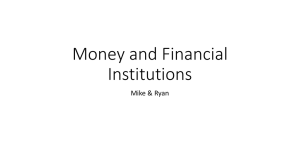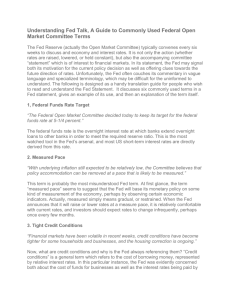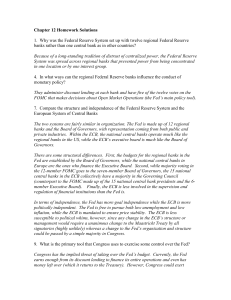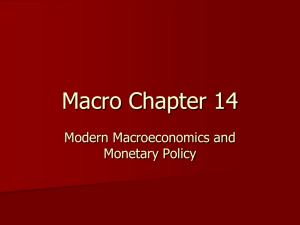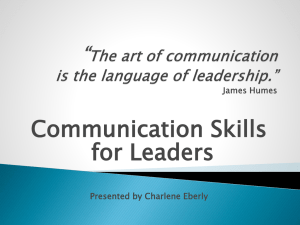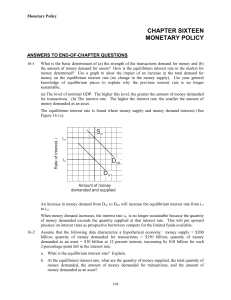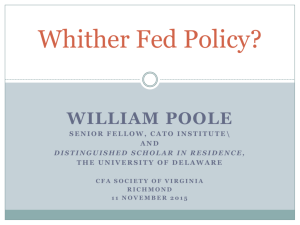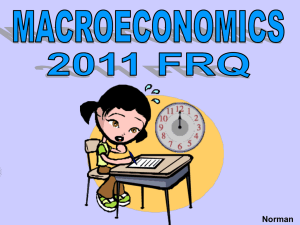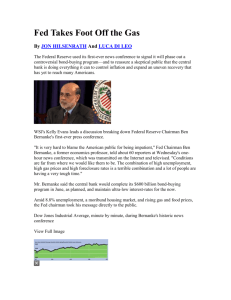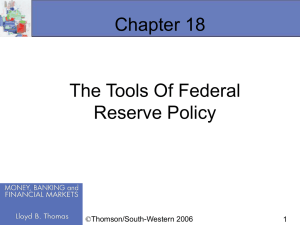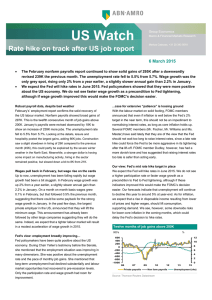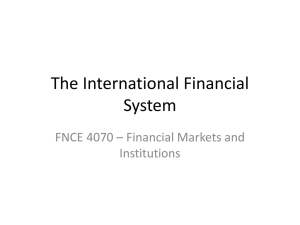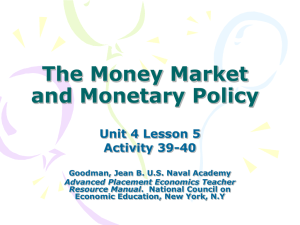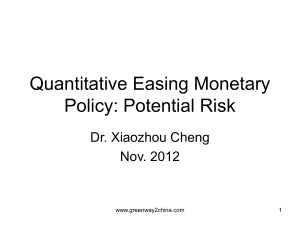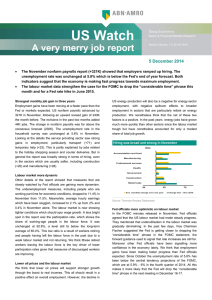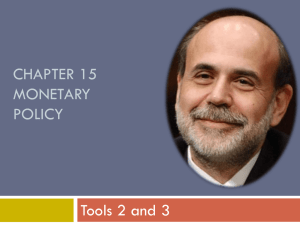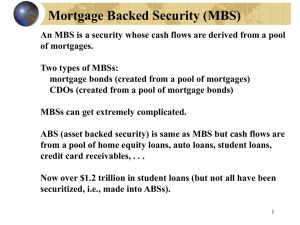Chapter 5 & 6 The Federal Reserve & Monetary Policy
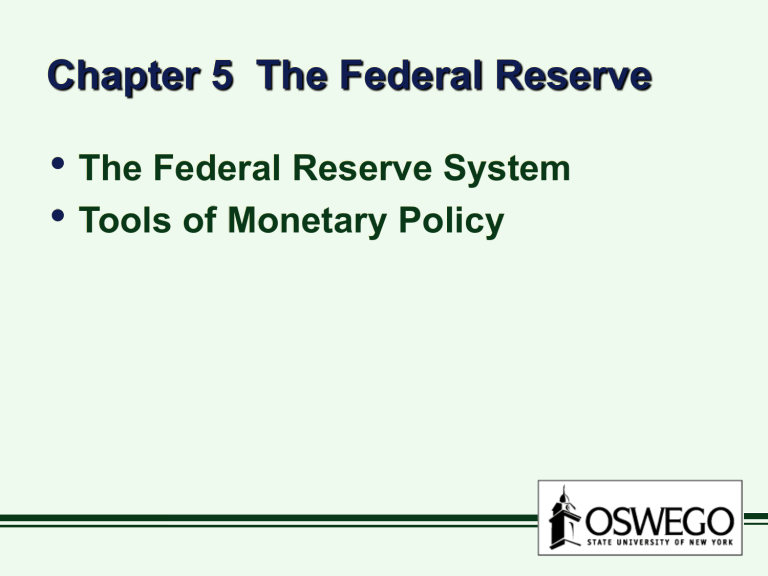
Chapter 5 The Federal Reserve
•
The Federal Reserve System
•
Tools of Monetary Policy
I. The Federal Reserve System
•
“the Fed”
• originally a lender of last resort to prevent bank panics
• today, also conducts monetary policy
Fed Structure
•
Board of Governors
• 7 members, 14 yr. nonrenewable terms
• 1 member is Chair
-- Alan Greenspan (1987)
•
Regional Banks
• 12 districts
• FRBNY is most important
• perform bank services
•
FOMC
• 12 members
-- Board
-- FRBNY President
-- 4 other district presidents
(rotate)
• meet every 6 weeks to vote on monetary policy (FF rate target)
• FRBNY implements FOMC votes
Fed independence
•
How?
• Fed is self-financing
• Fed governors serve long-terms
•
Why?
• economic vs. political goals
• long-term vs. short-term goals
•
Fed is NOT completely independent
• Fed powers can be limited by
Congress
II. Tools of Monetary Policy
• reserve requirement
• % deposits banks must hold as cash or Fed deposits
• changing this will affect MS but
• this is expensive to change, and is too powerful
• discount loans
• loans from the Fed to banks
• Fed can change interest rate or availability of loans but
• most banks do not use them
• not very effective in controlling MS
• open market operations
• main monetary policy tool
• Fed buys/sells Treasuries through private dealers
• in 1998 made $35 billion in profit
• FOMC votes on federal funds rate target
• FRBNY sells/buys to meet the target
if Fed BUYS Treasuries
• banks reserves increase,
FF rate decreases
• immediately
• other short-term rates fall, MS increases
• weeks - months
• economic expansion
• 1 year
FF rate target, 2000-2003
As FF rate falls, other ST rates also fall
Open market repos
• temporary changes in bank reserves
•
Repo
• Fed buys Treasuries with seller repurchasing them later
• temporary increase in reserves
• reverse repo
• Fed sell Treasuries and agrees to repurchase
• temporary decrease in reserves
Chapter 6. Monetary Policy
•
Goals
•
Recent history
I. Goals
• price stability/low inflation
• goal: below 3%
• 2003: 1.87% (CPI)
• low unemployment
• goal: natural rate (4%?)
• 12/03: 5.7%
• economic growth
• % increase in real GDP
• goal: 3%
• 4 th Q 2003: 4% annual rate
• financial market stability
• calm investors
• intervene if markets “too high” or
“too low”
Sometimes goals conflict
• low inflation vs. economic growth
• or
• low inflation vs. financial market stability
• but in 1990s, enjoyed strong growth, low inflation
II. Monetary policy in 1990s
•
Fed targets FF rate
• FOMC votes on FF rate target
• current target: 1%
(since 6/2003)
1990-91 recession
•
Fed slow to recognize recession and cut FF rate
• ‘90-’92 falls from 8% to 3%
• mild recession, but mild/slow recovery
1994-95
•
FOMC announces FF rate target after meeting
•
FF rate target raise 8 times (3-6%)
• prevent inflation
• surprise to financial markets
• “soft landing”
• currency intervention to increase
Yen/$
1998
•
Russian debt default
•
Asian currency crisis
•
Fed cuts FF rate
• bailout of LTCM to prevent financial panic
1999
• increases in FF rate for another “soft landing”
• reversed in 2000 after economy slows
•
3/91 - 3/01
• longest U.S. expansion
Today
•
FF rate target cut from 6.5% to 1%
2000-03
•
Recession 2001 (March-Nov.)
• slow recovery, esp. job market
•
FOMC has indicated that they will keep FF rate low for now
• not worried about inflation


